Safe Wings Ottawa World Migratory Bird Day 2020 Quiz

Migratory Bird Awareness Quiz
Test your knowledge about migratory birds and their challenges in the Ottawa region! This quiz covers fascinating facts about local bird species, the dangers they face, and how we can help them survive during their journeys.
Join us to learn more and contribute to protecting our feathered friends. Topics covered include:
- Species at risk
- Collisions with buildings
- Bird-friendly practices
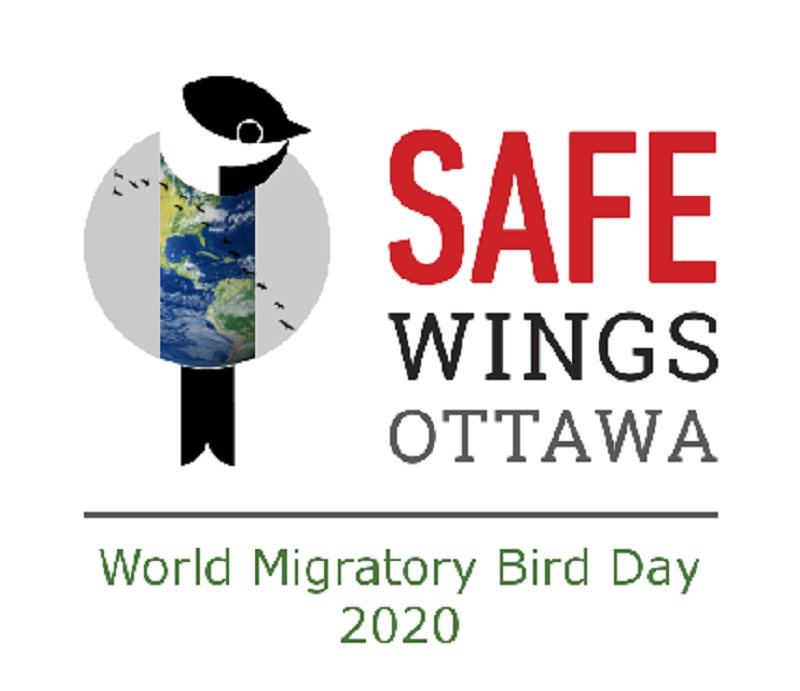
Happy World Migratory Bird Day from Safe Wings Ottawa! How much do you know about migratory birds in Ottawa and bird-window collisions? Test your knowledge with our online quiz.
Happy World Migratory Bird Day from Safe Wings Ottawa! How much do you know about migratory birds in Ottawa and bird-window collisions? Test your knowledge with our online quiz.
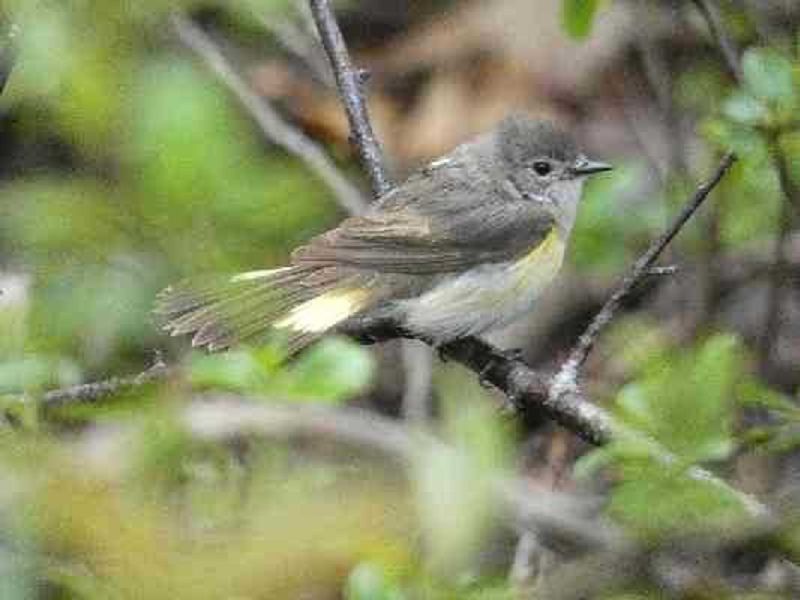
How many different species of birds (approximately) have been seen in the Ottawa region?
200
350
500
1050

How many bird species did birders find and report in Ottawa on World Migratory Bird Day last year (2019)?
50-75
75-100
100-150
150+
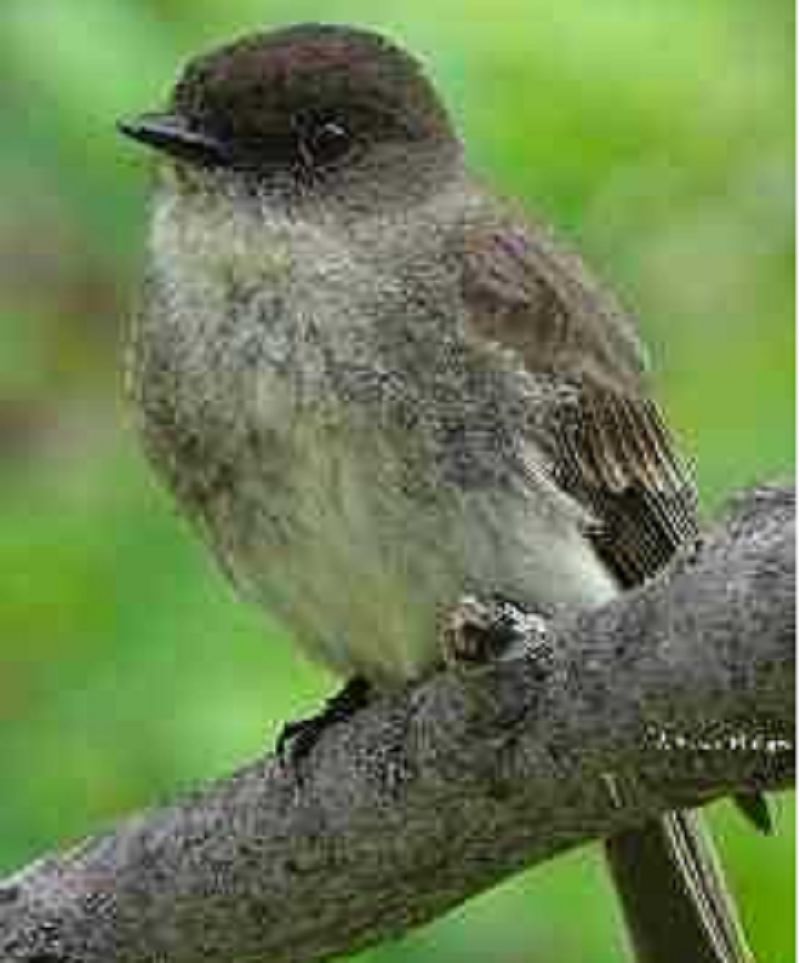
These are some migratory birds that can be found in Ottawa each spring. Which one is a Species at Risk?
Ruby-crowned Kinglet
White-throated Sparrow
Spotted Sandpiper
Chimney Swift
Eastern Phoebe
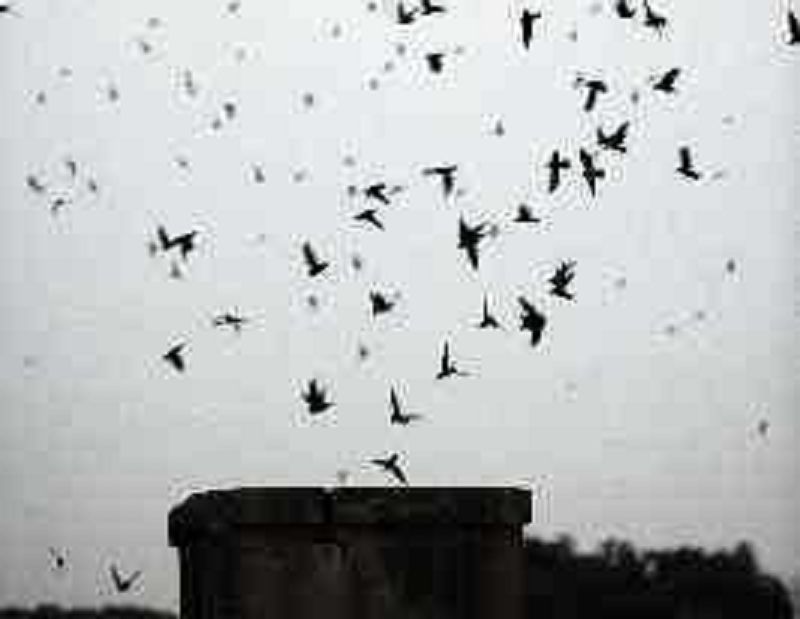
The Chimney Swift is listed as Threatened in Canada. During the spring and summer, this small, dark gray bird spends all day flying above the city, chattering and catching insects. At night, Chimney Swifts roost inside of chimneys with their small feet clinging to the vertical chimney wall – they are not able to sit on
the ground, swim, or perch like other birds. Before cities were built, Chimney Swifts roosted and nested inside hollow trees; as cities replaced forests, swifts needed to adapt to using a new form of habitat. Now, they are losing that habitat as well, as old masonry chimneys are being capped and torn down. Because of this and other challenges, the Canadian population of Chimney Swifts has declined by almost 90% since 1970.
Photo: Erin Brethauer
The Chimney Swift is listed as Threatened in Canada. During the spring and summer, this small, dark gray bird spends all day flying above the city, chattering and catching insects. At night, Chimney Swifts roost inside of chimneys with their small feet clinging to the vertical chimney wall – they are not able to sit on
the ground, swim, or perch like other birds. Before cities were built, Chimney Swifts roosted and nested inside hollow trees; as cities replaced forests, swifts needed to adapt to using a new form of habitat. Now, they are losing that habitat as well, as old masonry chimneys are being capped and torn down. Because of this and other challenges, the Canadian population of Chimney Swifts has declined by almost 90% since 1970.
Photo: Erin Brethauer
How many birds are estimated to collide with windows in North America each year?
200,000
500,000
1 million
1 billion
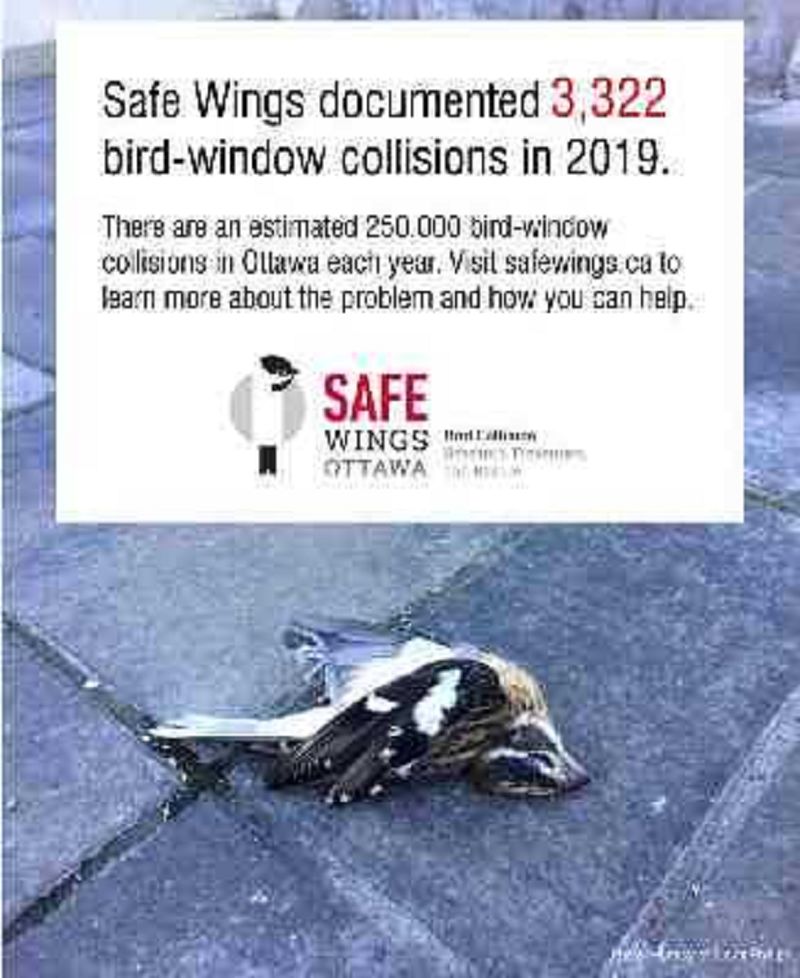
250,000 birds are estimated to collide with windows in Ottawa each year.
250,000 birds are estimated to collide with windows in Ottawa each year.
What are the main reasons birds collide with buildings?
They're flying too fast and they aren't looking at where they are going
They are fooled by reflections in windows, as well as by clear glass.
They can't see buildings from a distance and they have trouble avoiding them

Other factors that influence collision risk include: light pollution (pictured here), time of year (more birds collide during spring and fall migration), and weather (wind direction, temperature, air pressure and cloud cover can all affect the altitude at which birds fly).
Other factors that influence collision risk include: light pollution (pictured here), time of year (more birds collide during spring and fall migration), and weather (wind direction, temperature, air pressure and cloud cover can all affect the altitude at which birds fly).
What type of building is most dangerous to birds?
High-rise buildings
Department stores
Low-rise buildings (including residences)
Schools

Residences are responsible for 44% of bird collisions, while low-rises (up to 11 storeys) account for 55%, and high-rises for fewer than 1%. This is because most collisions happen within 5 storeys of the ground, but also because high-rise buildings are less likely to be in natural settings that attract birds, and because there are so many more houses and low-rise buildings than big towers.
Pictured here is an example of a low-rise building that is not bird-friendly: Birds are fooled by reflections of surrounding vegetation and sky in the large unmarked windows.
Many birds die trying to fly through glass or glass-like structures such as the clear balcony railings pictured here, that offer an unobstructed view of vegetation or open sky on the other side. Birds seeking places to perch, eat or hide are also be attracted to indoor houseplants, green walls and other indoor vegetation that are visible through windows.
The bottom line is that all types of building kill birds, but because low-rise residences are so numerous and the collisions they cause really add up, we encourage all homeowners to take action to prevent collisions on their property.
Residences are responsible for 44% of bird collisions, while low-rises (up to 11 storeys) account for 55%, and high-rises for fewer than 1%. This is because most collisions happen within 5 storeys of the ground, but also because high-rise buildings are less likely to be in natural settings that attract birds, and because there are so many more houses and low-rise buildings than big towers.
Pictured here is an example of a low-rise building that is not bird-friendly: Birds are fooled by reflections of surrounding vegetation and sky in the large unmarked windows.
Many birds die trying to fly through glass or glass-like structures such as the clear balcony railings pictured here, that offer an unobstructed view of vegetation or open sky on the other side. Birds seeking places to perch, eat or hide are also be attracted to indoor houseplants, green walls and other indoor vegetation that are visible through windows.
The bottom line is that all types of building kill birds, but because low-rise residences are so numerous and the collisions they cause really add up, we encourage all homeowners to take action to prevent collisions on their property.
What are important features for ensuring window markers are effective at preventing bird collisions? Check all that apply.
Density
Size
Contrast
Exterior Surface
All of the above

To prevent collisions, both reflective and clear glass should feature a visible pattern that meets the following criteria:
Density
Maximum 5 x 5 cm (2 x 2 inch) spacing between pattern elements.
Size
Pattern elements should be at least 6mm (1/4″ inch) wide.
Exterior surface
Patterns must be on the outside of the glass.
Contrast
Patterns must be visible in all light conditions.
To prevent collisions, both reflective and clear glass should feature a visible pattern that meets the following criteria:
Density
Maximum 5 x 5 cm (2 x 2 inch) spacing between pattern elements.
Size
Pattern elements should be at least 6mm (1/4″ inch) wide.
Exterior surface
Patterns must be on the outside of the glass.
Contrast
Patterns must be visible in all light conditions.
Which of the following glass buildings in Ottawa has used bird-friendly design? Select all that apply.
0%
0
0%
0
Place Bell, 160 Elgin St
0%
0
0%
0

A — Although the National Arts Centre was meant to be bird-friendly, the specially designed glass is ineffective because the visual markers are placed on the inside surface where they don’t break up reflections; they are spaced too far apart; and they are low-contrast, and thus not sufficiently visible. The building also includes many clear glass railing panels that are lethal to birds.
B – The façade of Place Bell features glass with horizontal lines fused to outside surface, and the railing panels are frosted glass. The recent building retrofit was designed by an architect familiar with Toronto Green Standard, which mandates bird-friendly design.
C – White dots in a 5 cm x 5 cm grid pattern were applied to the walkway after dozens of Bohemian Waxwings died here in one day in 2016. An almost identical incident in the same location in 2013 inspired the creation of Safe Wings Ottawa. The City of Ottawa is currently developing bird-friendly design guidelines.
D – The innovative design of the STEM Complex , including different types of patterns on the glass, breaks up the reflections and transparency that would otherwise be dangerous to birds.
A — Although the National Arts Centre was meant to be bird-friendly, the specially designed glass is ineffective because the visual markers are placed on the inside surface where they don’t break up reflections; they are spaced too far apart; and they are low-contrast, and thus not sufficiently visible. The building also includes many clear glass railing panels that are lethal to birds.
B – The façade of Place Bell features glass with horizontal lines fused to outside surface, and the railing panels are frosted glass. The recent building retrofit was designed by an architect familiar with Toronto Green Standard, which mandates bird-friendly design.
C – White dots in a 5 cm x 5 cm grid pattern were applied to the walkway after dozens of Bohemian Waxwings died here in one day in 2016. An almost identical incident in the same location in 2013 inspired the creation of Safe Wings Ottawa. The City of Ottawa is currently developing bird-friendly design guidelines.
D – The innovative design of the STEM Complex , including different types of patterns on the glass, breaks up the reflections and transparency that would otherwise be dangerous to birds.
Window markers are as effective when applied to the interior of the window as they are when applied to the exterior.
True
False

Window markings must be on the outside of the glass. Anything on the inside will not be visible enough to break up dangerous reflections.
Window markings must be on the outside of the glass. Anything on the inside will not be visible enough to break up dangerous reflections.
A bird just hit your window and is sitting on the ground, not moving and looks stunned. What should you do?
Leave it alone.
Give it water.
Wait to see if it will fly away.
Act immediately. Pick it up safely, place it in a closed paper bag or box and bring the bird to a local rehabber.
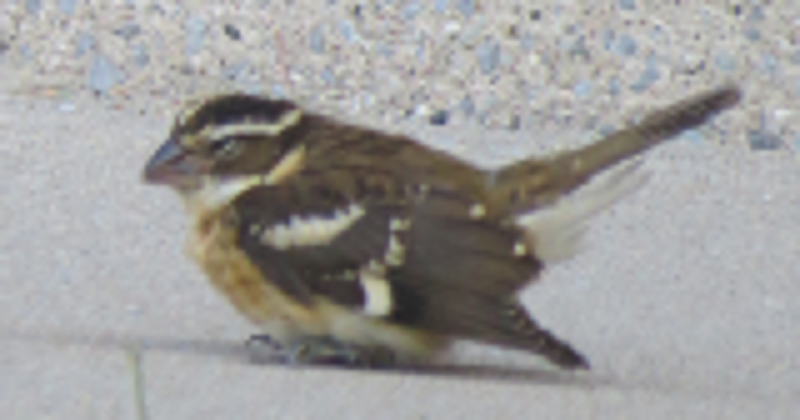
A stunned bird usually has a concussion, may have other injuries, and is very vulnerable to predators. To greatly increase its odds of survival, pick it up as soon as possible, before it tries to fly away, and follow our instructions for rescuing birds. Do not wait to see if the bird will fly away on its own; being able to fly away does not mean the bird is okay.
If you are in the Ottawa area call Safe Wings Ottawa immediately at 613-216-8999 and visit safewings.ca for information on rescuing birds and reporting window collisions.
A stunned bird usually has a concussion, may have other injuries, and is very vulnerable to predators. To greatly increase its odds of survival, pick it up as soon as possible, before it tries to fly away, and follow our instructions for rescuing birds. Do not wait to see if the bird will fly away on its own; being able to fly away does not mean the bird is okay.
If you are in the Ottawa area call Safe Wings Ottawa immediately at 613-216-8999 and visit safewings.ca for information on rescuing birds and reporting window collisions.
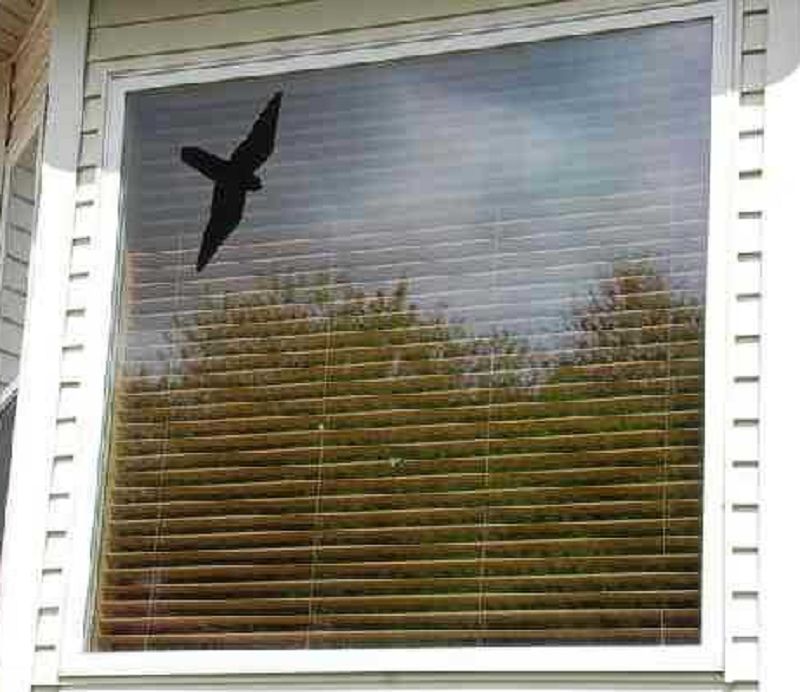
Hawk silhouettes prevent bird-window collisions.
True, they scare birds away.
False. Birds will simply try to fly around single silhouettes, or any shapes that are spaced too far apart. These are only effective if applied across the entire window surface, following the 5 cm x 5 cm rule.
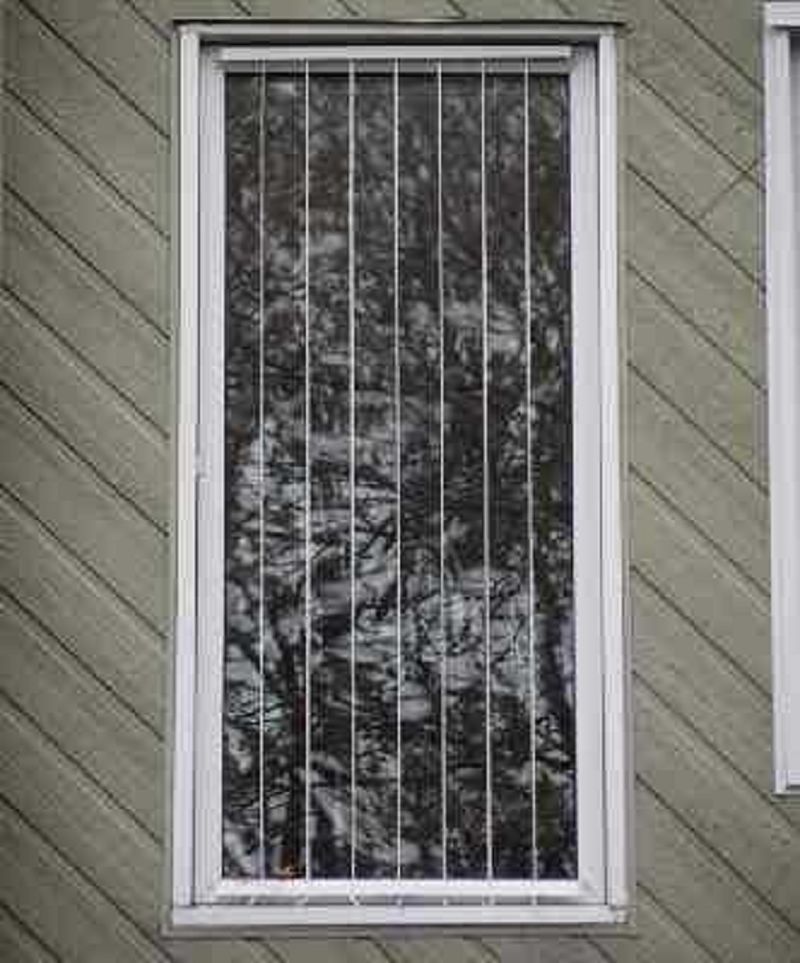
There are many effective window treatments available, varying in price and ease of installation.The Acopian BirdSavers shown here are a simple DIY option to prevent bird-window collisions.
There are many effective window treatments available, varying in price and ease of installation.The Acopian BirdSavers shown here are a simple DIY option to prevent bird-window collisions.
What should you do if you find a baby bird on the ground?
Give it water.
Feed it wild bird seed.
Pick it up and take it home with you.
Before rescuing the baby bird make sure it isn’t a fledgling learning to fly which should be left alone. If it has little to no feathers place it back in it's nest immediately. If the nest is not accesible keep it warm and bring it to your local rehabber as soon as possible.
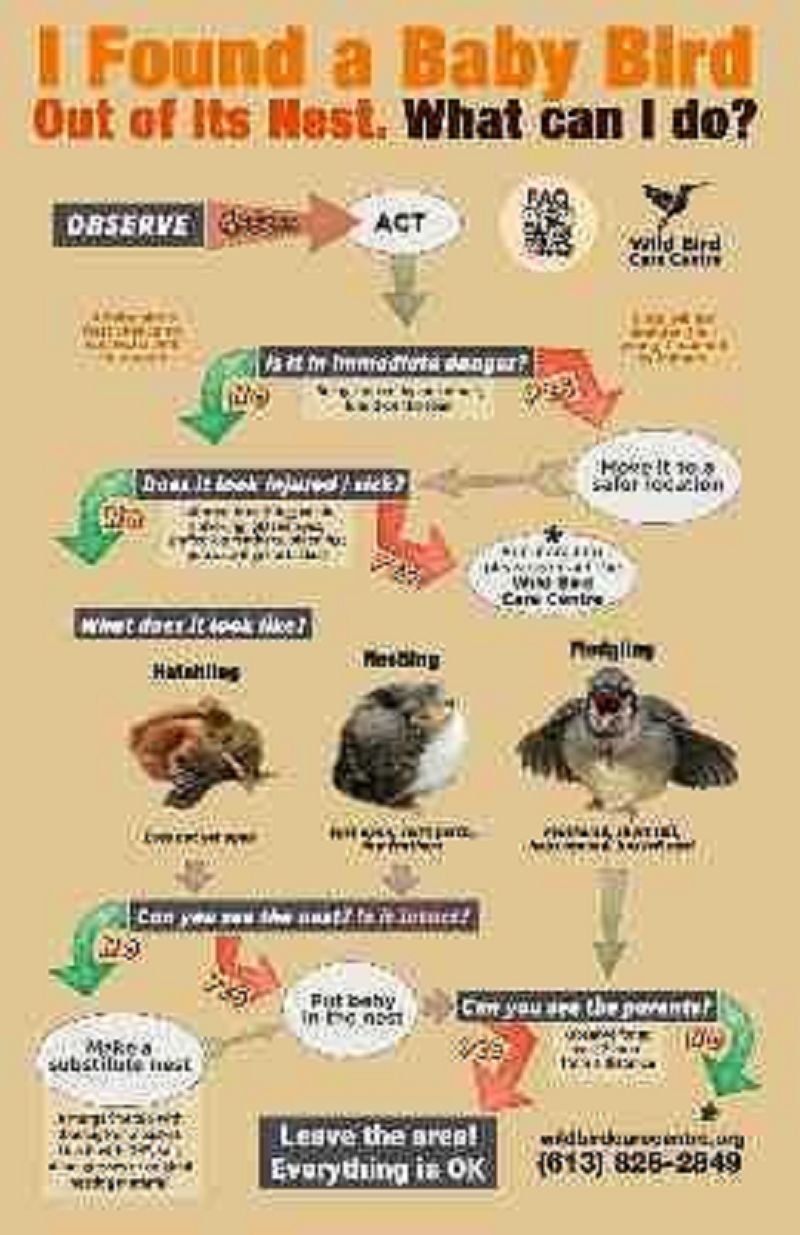
If you find a baby bird, first determine is it needs help, and if it does, contact a wildlife rehabilitation centre. If you are in the Ottawa-Gatineau area, contact the Ottawa Valley Wild Bird Care Centre.
If you find a baby bird, first determine is it needs help, and if it does, contact a wildlife rehabilitation centre. If you are in the Ottawa-Gatineau area, contact the Ottawa Valley Wild Bird Care Centre.
{"name":"Safe Wings Ottawa World Migratory Bird Day 2020 Quiz", "url":"https://www.quiz-maker.com/QPREVIEW","txt":"Test your knowledge about migratory birds and their challenges in the Ottawa region! This quiz covers fascinating facts about local bird species, the dangers they face, and how we can help them survive during their journeys.Join us to learn more and contribute to protecting our feathered friends. Topics covered include:Species at riskCollisions with buildingsBird-friendly practices","img":"https:/images/course7.png"}
More Quizzes
2020 March - Pictures of the Month
12614
Sustainability Week
17831
Leah’s oddly specific friendship quiz
1680
Enrolments Quiz
12615
Test Your Knowledge: Golden Gophers Football Team
201025747
What Taylor Swift Song Are You? Free to Find Out
201030382
Tonight on the Titanic: Test Magic Treehouse Knowledge
201057497
Under the Truman Doctrine: Test Your Policy Know-How
201036547
MeTVzes: Ultimate 70s TV Classics Trivia Challenge
201043170
Endocrine System: Test Your Hormone & Gland Knowledge
201029361
Free Historical Linguistics Knowledge
201031491
Take the Smart Brain: Test Your IQ & Logic Skills
201068498
